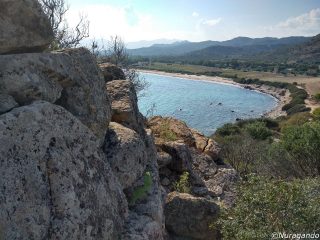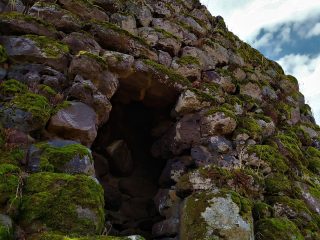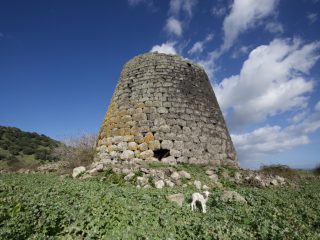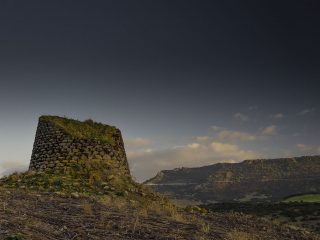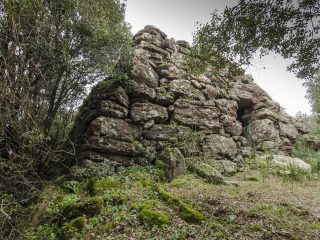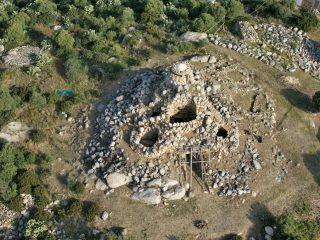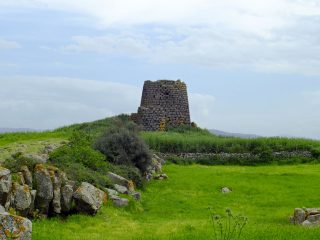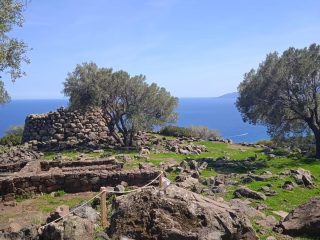The necropolis of Su Murrone, located on a trachyte elevation about 6 Km from the town of Chiaramonti, has five hypogeum burials, four of which are currently open to the public.
Discovered in 1968 by Ercole Contu and studied by Giuseppe Pitzalis between 1989 and 2000, they are unusual because of the presence of consistent traces of red ochre paint. The planimetry layout is constant: access via the dromos, followed by an anti-cell with east/south-eastern entrance, main room and additional cells stemming off this.
Particularly noteworthy is Tomb 1, complete with large, monumental atrium and a door edged with a relief frame. There are a number of decorative motifs and carved symbols in the main room of the hypogeum, such as the reproduction of a double-pitch wooden ceiling and the representation of bull’s horns.
Some of the material uncovered include, in abundance, lithic pickaxes, used to dig and the finishing work on the domus itself. The necropolis was then used during the Eneolithic and Ancient Bronze eras with a sporadic presence in Roman times.







